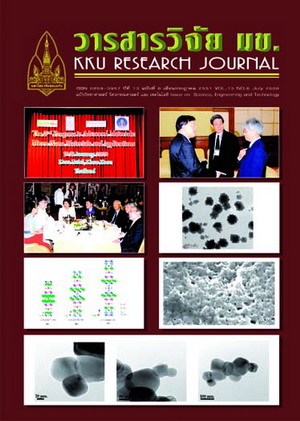Dispersion of titanium dioxide nanoparticles in silicone oil using poly(ethylene glycol-b-dimethylsiloxane-b-ethylene glycol) triblock copolymers as dispersants
Main Article Content
Abstract
Titanium dioxide (TiO2) nanoparticles are very attractive as a UV protection ingredient in cosmetic,
paint and coating industries. However, the preparation of suspension of TiO2 nanoparticles is rather difficult
mainly due to their strong attractive interactions between the very small particles. To overcome this problem,
dispersants are usually added to increase distance between the nanoparticles and prevent the agglomeration.
The purpose of this study is to find the effective methods for dispersing the agglomerated TiO2 into nanoparticles.
Silicone oil normally used in cosmetic products was used as media. The newly synthesized poly(ethylene
glycol-b-dimethylsiloxane-b-ethylene glycol) triblock copolymers were used as non-ionic dispersants. The
segment of polyethyleneglycol was expected to anchor on the surface of TiO2 nanoparticles due to its high
polarity while the segment of polydimethylsiloxane had favourable interaction with silicon oil medium. The
length of each block was systematically controlled allowing the variation of local interfacial interactions
between the TiO2 nanoparticles and the medium. The efficiency of dispersion was compared by studying
properties of the suspension including rheological behavior and UV protection ability.


